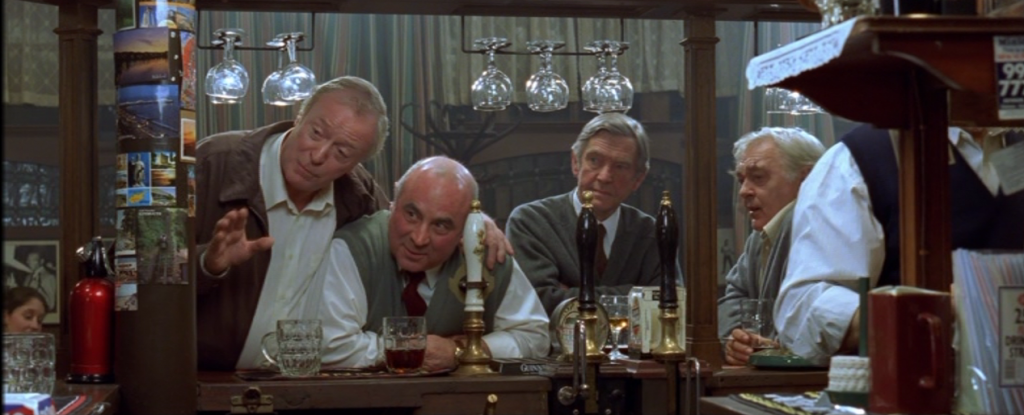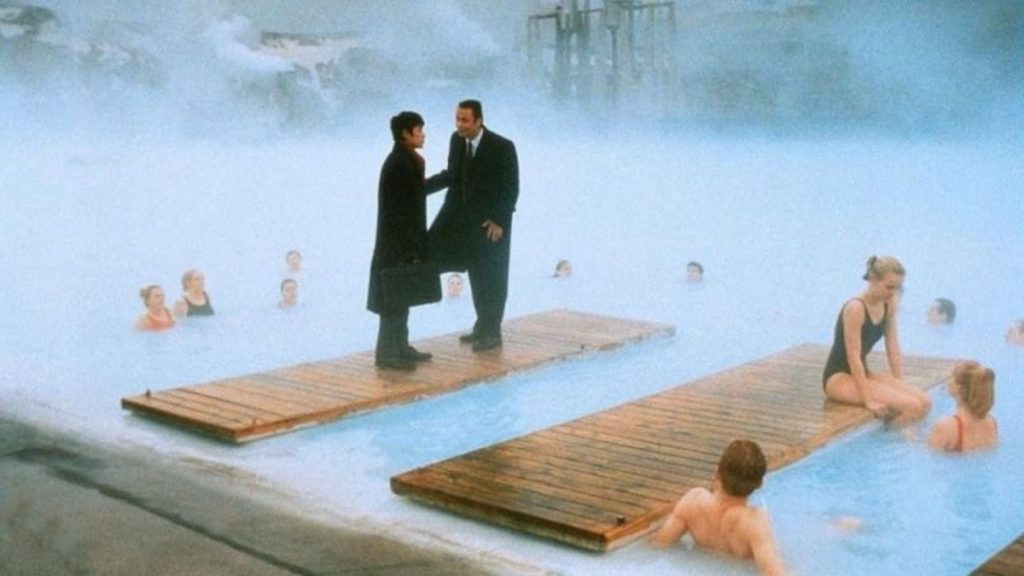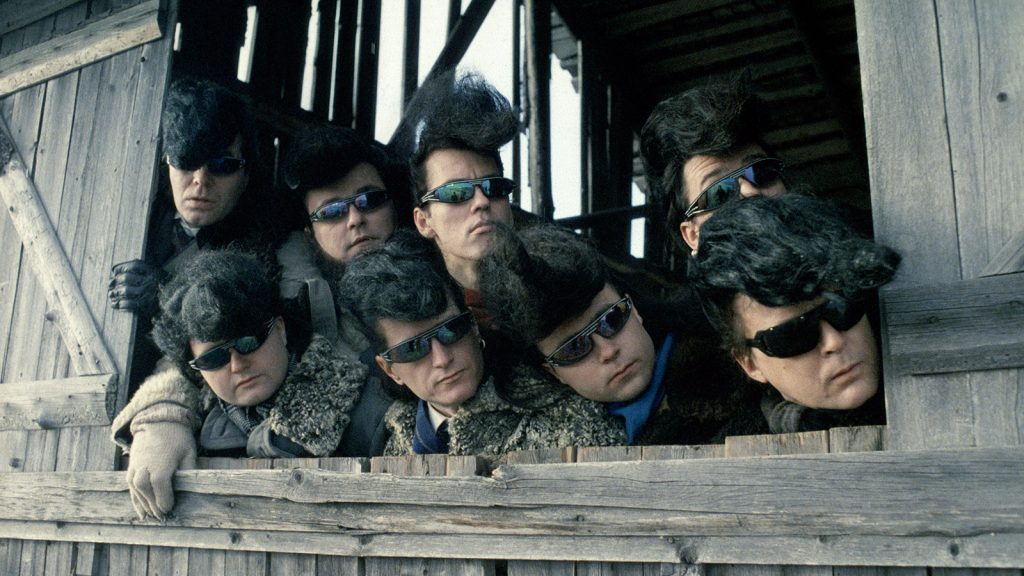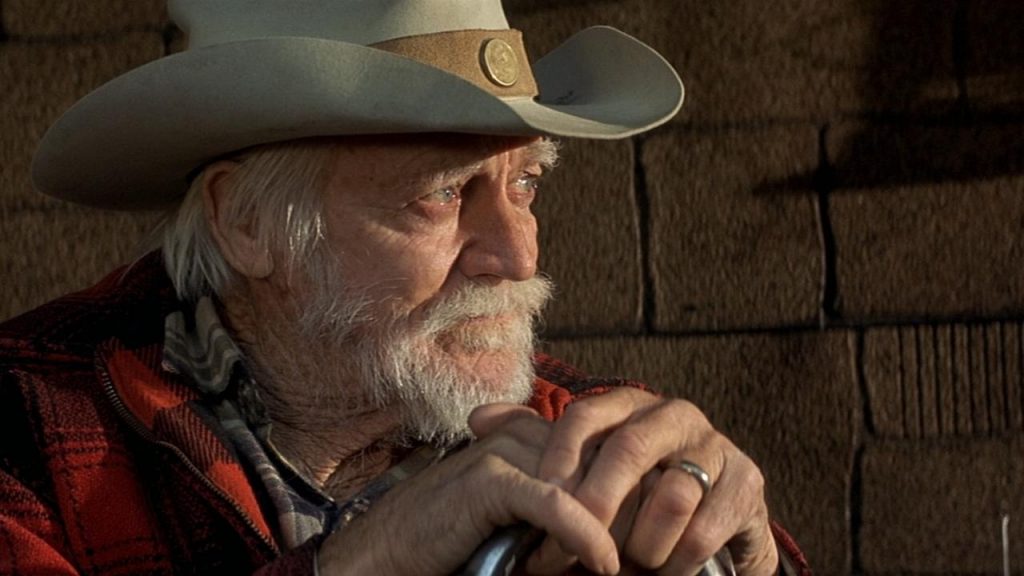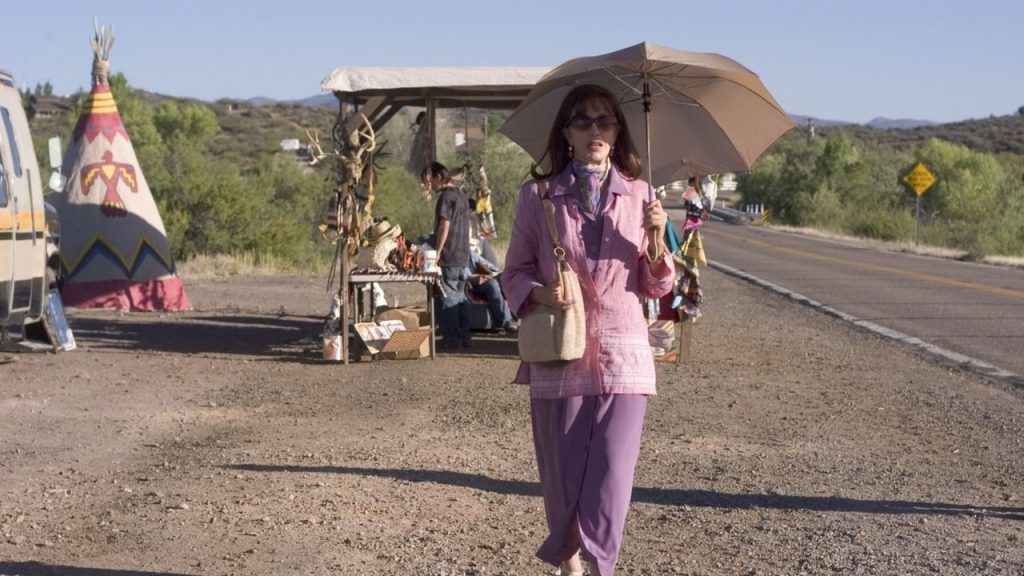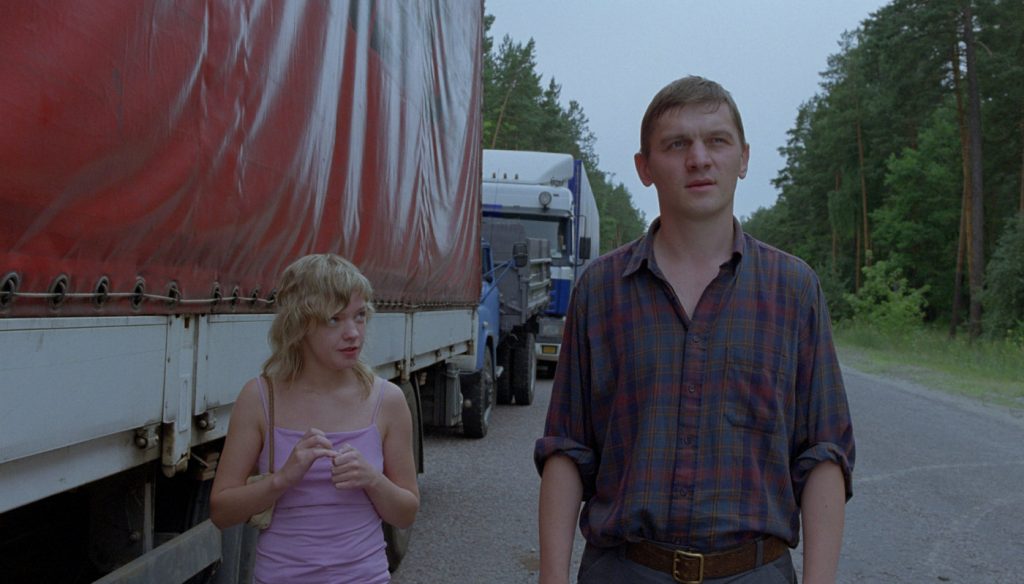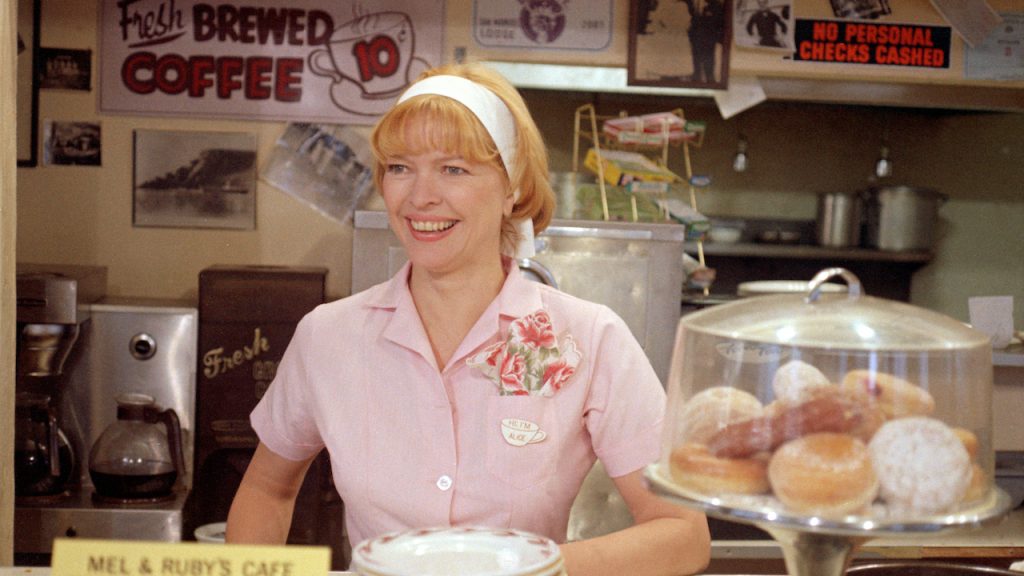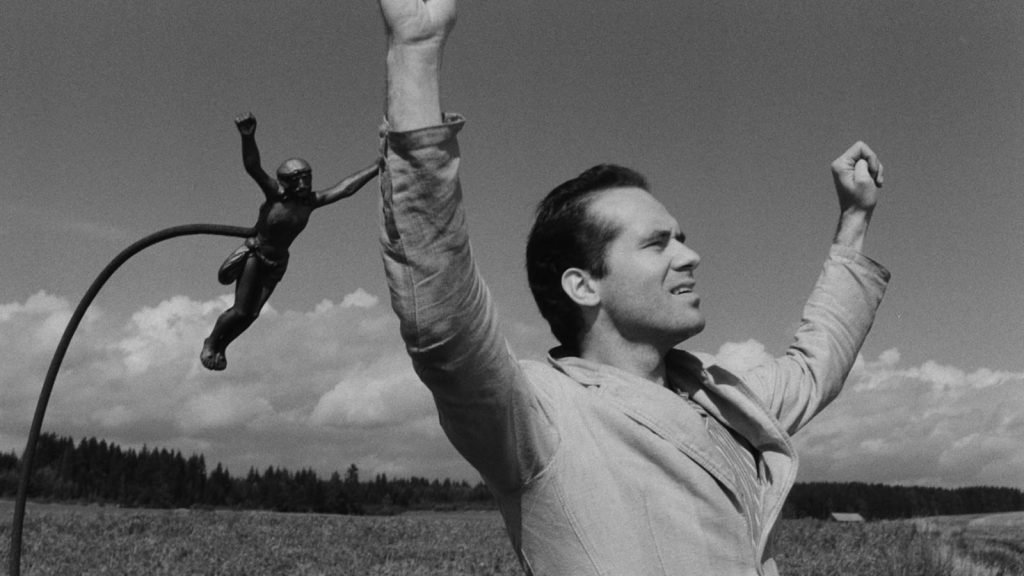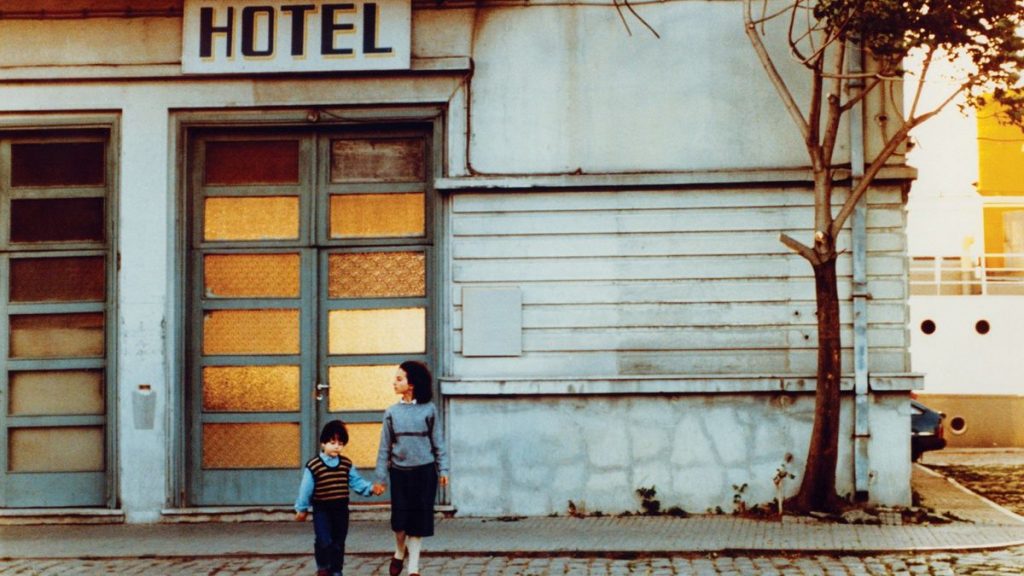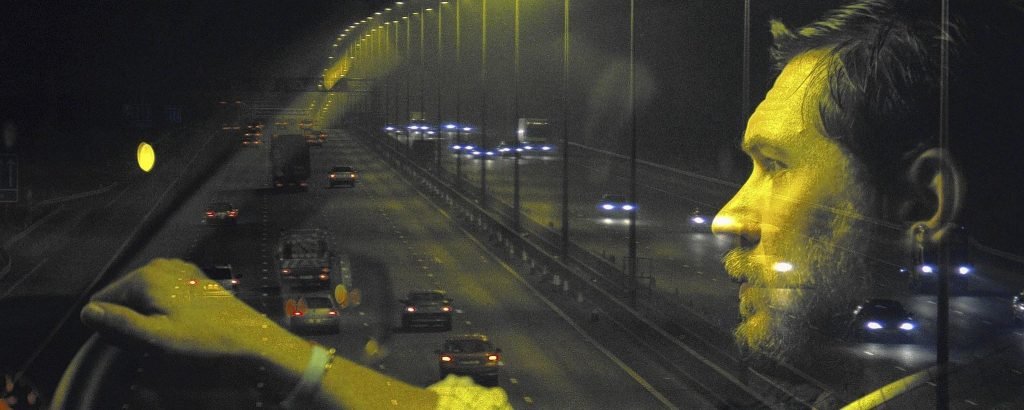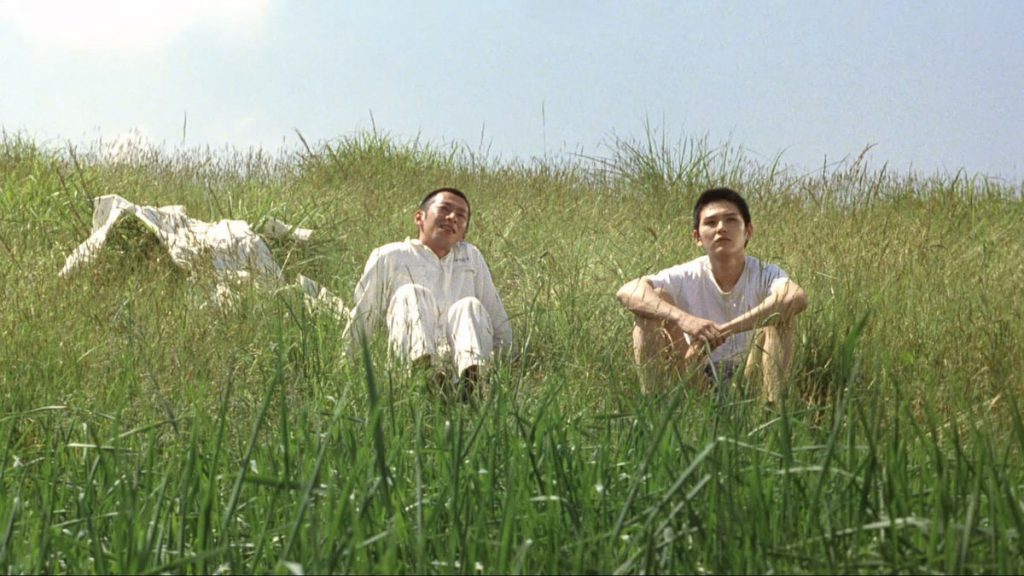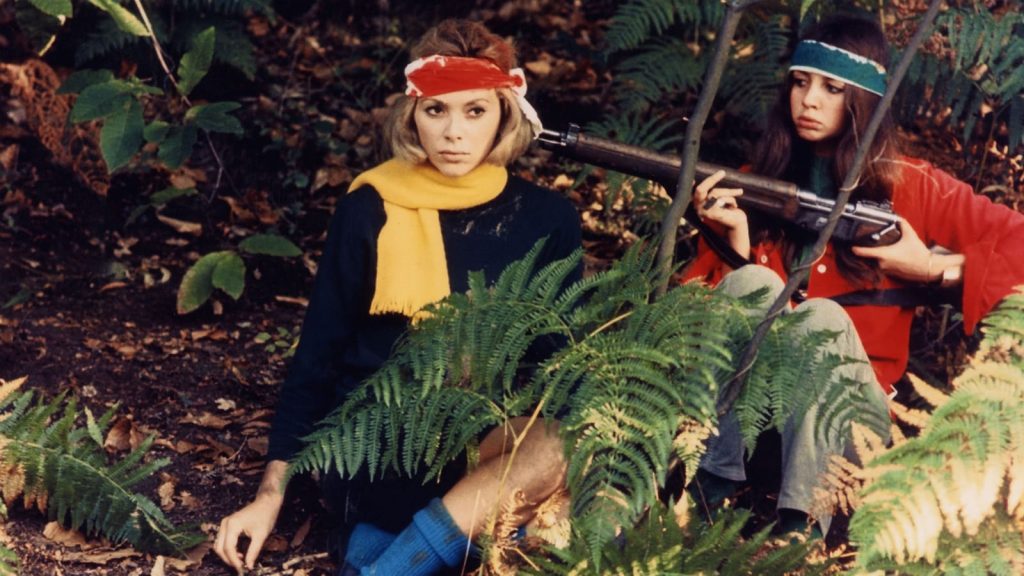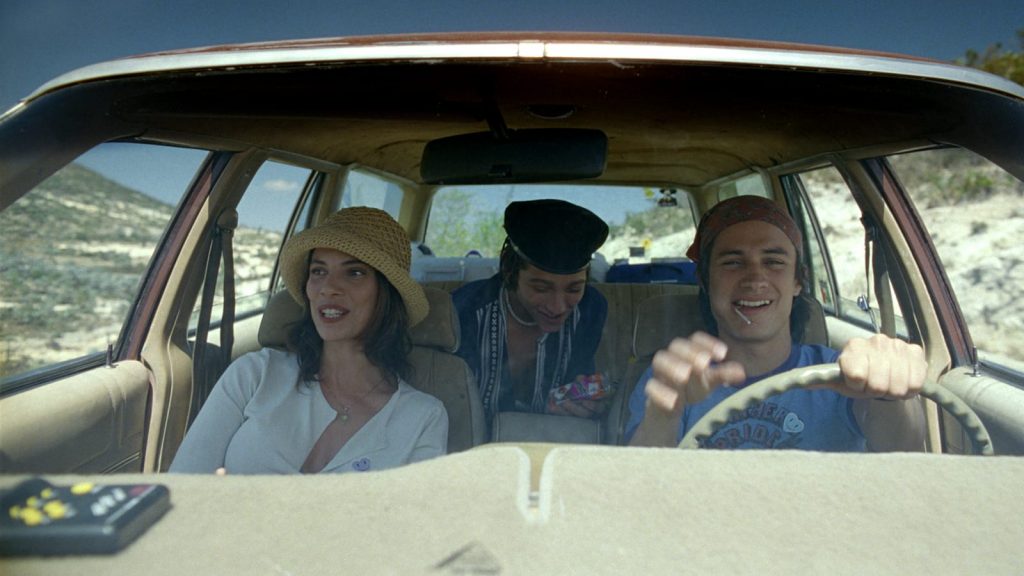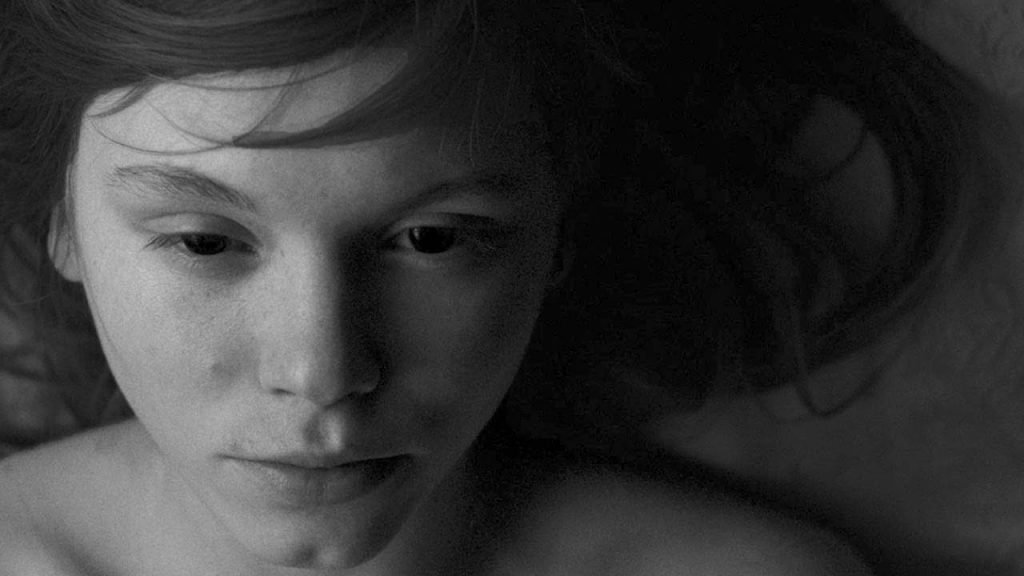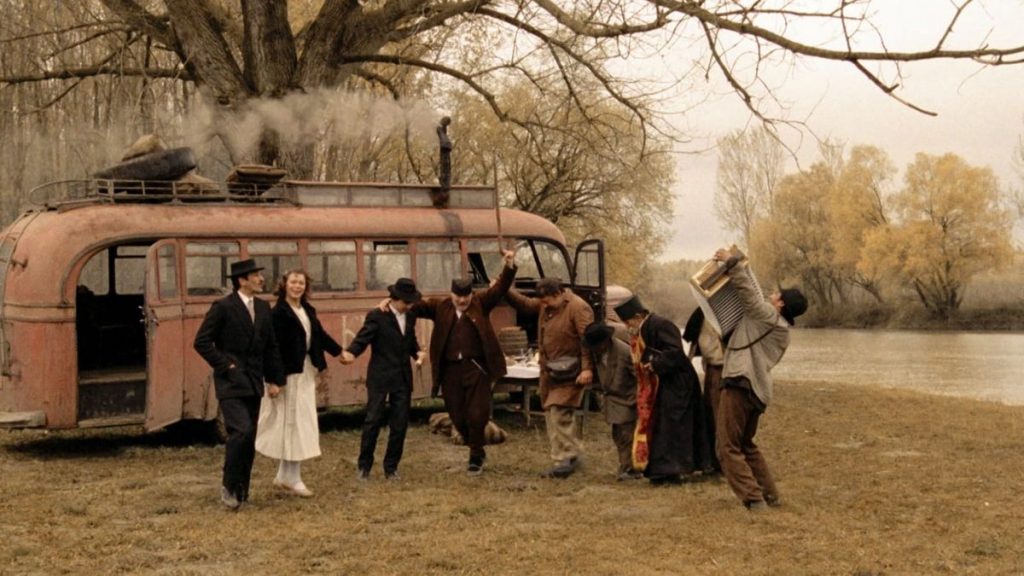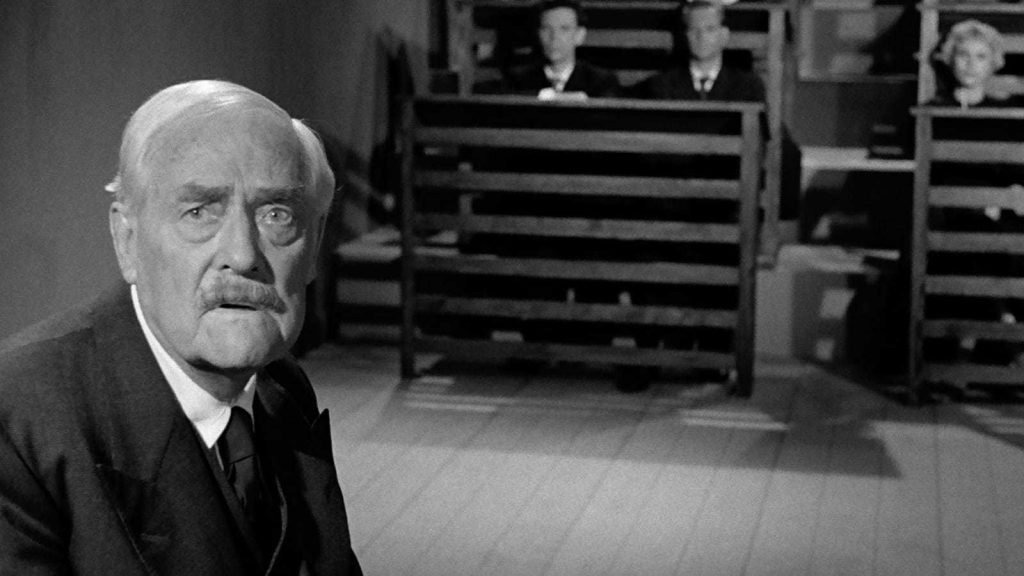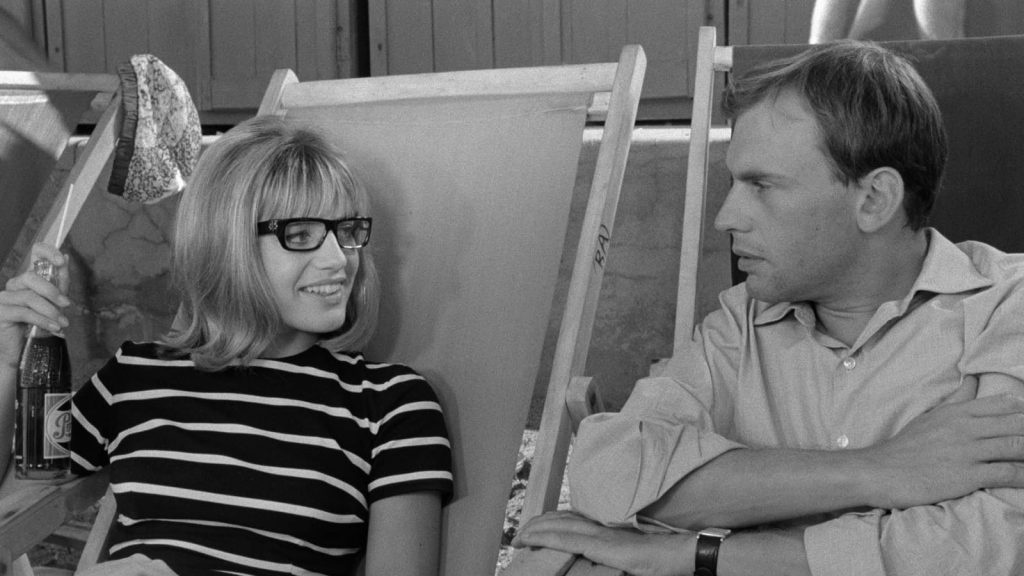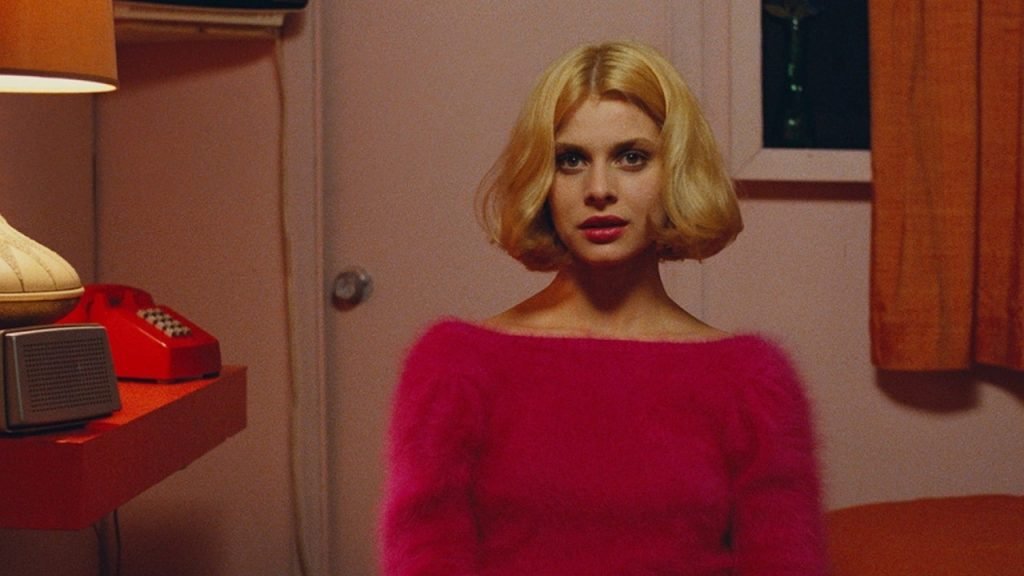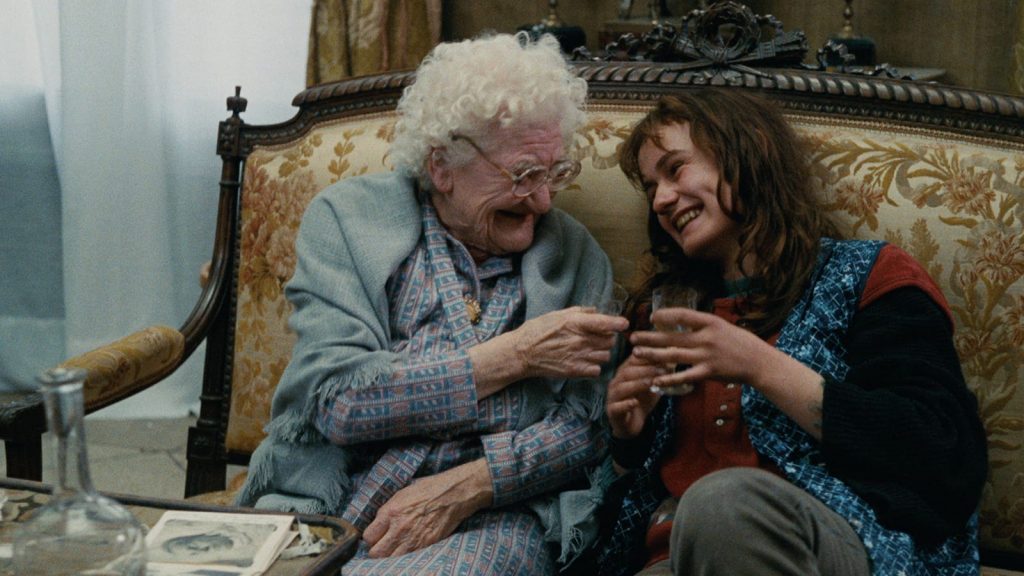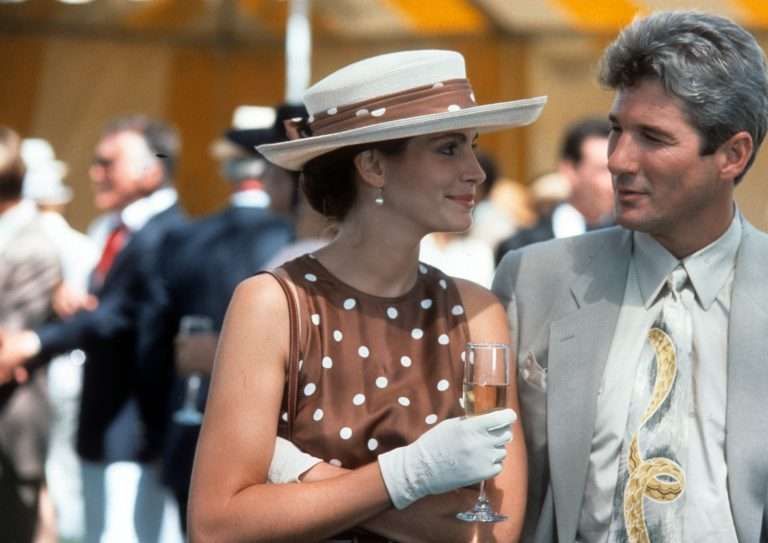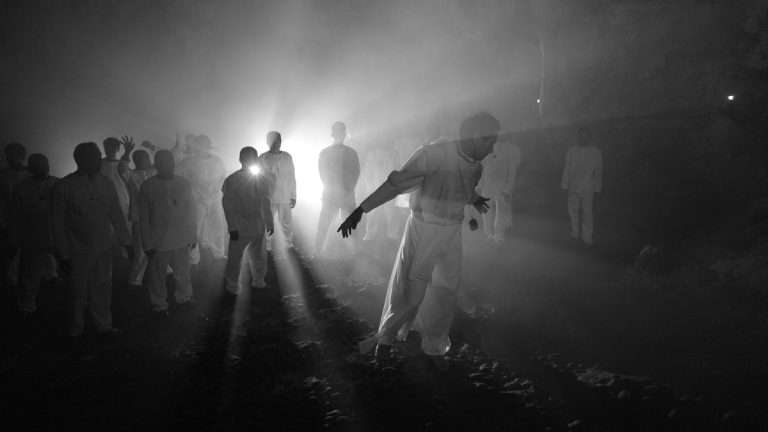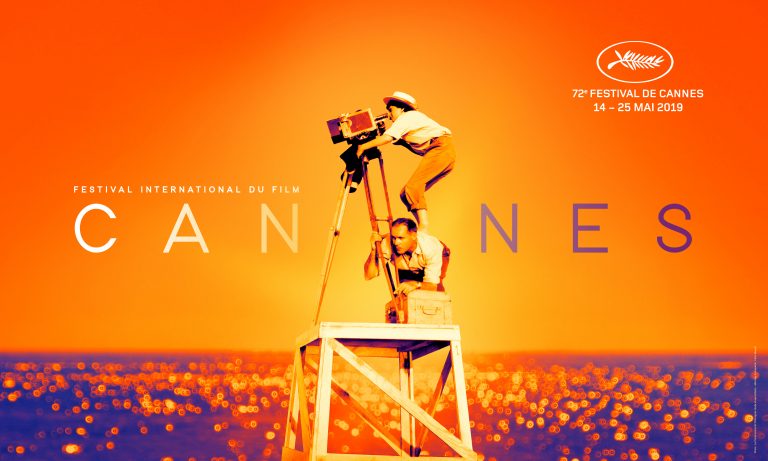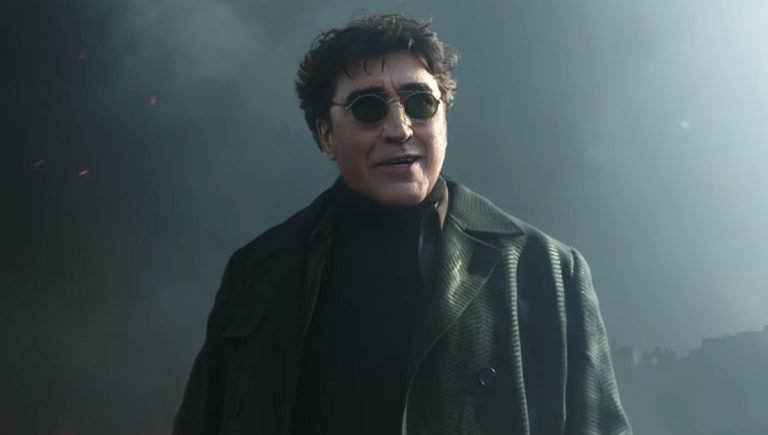Road movies are difficult to tabulate. More so because they mirror the styles of various popular genres like comedy (It’s a Mad, Mad, Mad, World), action-thriller (Mad Max), or horror (Zombieland), amongst many more. Several film scholars believe that road movies are primarily a lump of all these genres put together. As Wikipedia would tell you, it is “an elusive and ambiguous film genre” and an “overlooked strain of film history.” I almost agree with it.
Apart from an actual ‘road,’ all road movies have another prevailing motif – the socio-economic ambition of the characters. No matter how original or trite the subject is, these two themes can be traced in almost every scene. And, since we travel across countries/states/cities in these films, inevitably, a road movie becomes an amorphous cultural reflection of the region. Thus, making it the most cardinal and yet, the least revered form of mainstream cinema across the globe.
What I am trying to congregate here are the 20 great road movie titles from different corners of the world, which are either underappreciated or under-seen or almost forgotten. These are NOT the first names that pop up into your mind if someone asks you about your favorite road movie. These are the missing titles on most of our watch lists, but I’m sure these excellent pieces of cinema are worth your time. Give them a try.
I’m not including the most admired and circulated movies like It Happened One Night, Easy Rider, Nebraska, Nomadland, The Motorcycle Diaries, Sideways, or Into The Wild, etc., because we all know and have seen these films multiple times, maybe. This is an attempt to introduce (or perhaps re-introduce some of you) these rare gems which are beyond Hollywood and deserve more veneration than just being the ‘festival favorites’.
Hon’ble Mention: Though I abhor the concept of honorable mentions, it feels more like damage control & a people-pleasing exercise than an honor, but I have to mention Thelma And Louise (1991). I don’t think any list that assembles road movies can be devised without the inclusion of this “culturally, historically or aesthetically significant” film. There is nothing more or new I can add for this one that has not been said already. So, I’ll move on to my list instead.
Here are my 20 underrated road movies you need to see, which are also criminally underrated:
20. Last Orders (2001) | UK
Based on Graham Swift’s Booker Prize-winning novel, it follows three WWII veteran friends (Bob Hoskins, Tom Courtenay, David Hemmings) on a road trip to Margate to scatter the ashes of their departed companion, Jack (Michael Caine).
Last Orders is equally a memory odyssey, as much as it is about a road journey. This is a film about ordinary lives that proves there are no ordinary lives. With a shoestring budget of $9 million and 42 days to shoot, director Fred Schepisi (A Cry in the Dark, Six Degrees of Separation) gives the entire credit to the ensemble cast, which also boasts the great Helen Mirren, Ray Winstone, and JJ Feild, among others, to be able to complete the film.
The non-linear flashbacks, which surf through decades, help you navigate the paths the five central players hiked through to reach the point where we first meet them. The film has a grieving heart masked beneath a wickedly funny dark comedy. Pinned under the Bar-culture (as the title suggests), take this road journey, chauffeured by the British sense of humor.
19. Cold Fever (1995) | Iceland
Cold Fever follows a Japanese man, Hirata (Masatoshi Nagase), who finds misadventures and eccentric characters during his journey to Iceland to perform a memorial service for his parents. To call it quirky is an understatement, within minutes, things start getting weird (good weird). To give an instance, there is a sudden aspect ratio switch (square to widescreen) as soon as Hirata lands in Iceland from Japan. It might remind you of the masterful usage of a similar technique in Julia Roberts’ deliciously unhinged and excellent series, Homecoming (2018), on Amazon. And since Director Friðrik Þór Friðriksson (Fridrik Thor Fridriksson), subconsciously woven the sterile, frozen blankets of Iceland into supporting characters, this gimmick finds logic.
Hirata’s excursion is sprinkled with piquant characters like an eccentric cab driver, a bickering American couple (Fisher Stevens & criminally underrated Lily Taylor), a remote cowboy bar, and GHOSTS!
Fridriksson’s direction is very sporadic. His scenes are short and precise, which keeps the film from drowning in melodrama. Cold Fever is a cross-cultural chimera with humor, the supernatural, and grief, and is one-hundred-percent experiential. If you’re planning to hop on to this crazy ride, it’ll take effort to get to the other side.
Watch Cold Fever on MUBI
18. Leningrad Cowboys Go America (1989) | Finland
I can never figure out if Aki Kaurismaki (wildly known for The Match Factory Girl) is a minor great director or a great minor director. The filmography of this Finnish auteur doesn’t have a single bad film, only better as each explores the exponentially insane ways of our existence. Though personally, I’m not sure if Kaurismaki’s viewpoints are always riveting, his films are persistently singular. He first shone brightly on the world’s map with Leningrad Cowboys Go America. It was his first ever film to get a theatrical release in America.
This mockumentary is about the road (mis)adventures of a fictional Russian rock band (Leningrad Cowboys) that travels to the United States to become famous. The title came from the Marx Brothers’ film Go West (1940). The fictional band took a life of its own after the release of the film and started recording songs, touring, and premiering videos. The film consciously avoids anthropology, sarcasm, or easy laugh, you smile throughout, every minute, but you rarely laugh.
The tale has a unique, alien charm that balances its flaws. Cowboys is not the ideal introduction to the Kaurismaki work, but it is a start.
Check out the list of 10 Essential Aki Kaurismaki Films
17. The Straight Story (1999) | USA
Based on an incredible true story, 73 years old Alvin Straight, who is not licensed to drive a car due to overage and poor eyesight, starts his journey on a lawn mower by attaching a small trailer to meet his ill brother, who is hundreds of kilometers away. The lawn mower had a maximum speed of about 8 km/hr, and Straight sets off on a 390 km journey on it! David Lynch translated every single emotion Straight had during his extraordinary experiences with transparent honesty in The Straight Story.
I guess most of us would agree that whatever Lynch does, is interesting, to say the least. Whether you subscribe to his cinema or not, you cannot deny the reluctant charm of his films. The Straight Story will make you wonder if it’s the same David Lynch of Blue Velvet (1986) and Mulholland Drive (2001). He has always maintained that The Straight Story is his most experimental film. He shot the film on the exact same route that Alvin Straight took and in chronological order. So, all the weather, terrain, and look changes you witness in the film are all real.
Also, Read – Anatomy of David Lynch
Richard Farnsworth gives a haunting performance as Alvin Straight. He totally deserved the Oscar that year (Kevin Spacey won for American Beauty) but had to settle with only a nomination.
Though he had earlier made another road movie, Wild at Heart (1990), it feels like history has absolved David Lynch from doing something different. Make sure you watch this criminally underappreciated road movie this weekend.
16. Transamerica (2005) | USA
Transamerica is, critically, the least revered movie on this list. But that doesn’t make it any less. The film follows a male transsexual named Stanley/Bree (Felicity Huffman), who’s in the last stages of preparation for a sex-change operation when she learns that she may have fathered a son years before. The plot is essentially a road trip movie in which she and her teen son, Toby (Kevin Zegers), bond while driving across the country.
Debutant director Duncan Tucker grappled with rejection for three years, as everybody thought the script was too risky and uncastable. His mother and brother mortgaged their respective houses, he borrowed some money from his friend, and went into credit card debt to fund the film. Tucker approached Felicity Huffman, who loved the script. The only glitch, now, was that she was to shoot a TV pilot in 14 weeks, and if that gets picked, she’ll have no dates. They shot Transamerica at a fanatic pace, and finished shooting a day before she filmed her TV pilot. The film premiered just after she won the Emmy for that particular show, Desperate Housewives (2004-2011).
And that performance by Felicity Huffman! Ideally, that performance should be your only cognition to watch Transamerica, but it doesn’t hurt that it’s an exhaustively conceived road movie.
15. My Joy (2010) | Russia
Let me begin with the fact that My Joy is the first Ukrainian film ever to compete for the Palme d’Or. It was director Sergei Loznitsa’s challenging feature debut. He is primarily known for his documentaries. The film drew a profuse outcry in Russia, where it was blamed for having a Russophobic askew. In fact, the Russian film industry was also sundered in embracing & abandoning the film. Many called it the best film of the decade, and few accused Loznitsa of having a Russia-hating standpoint.
After dodging the police, a young truck driver embarks upon a surreal and supernatural odyssey. His rendezvous with characters who recall Russia’s past and present troubling environment conjures up the rest of the film.
This bitterly funny road movie traces various silhouettes that connect ambiguously. This is a road movie that is both a soul journey and a fable populated with supernatural tangents. As someone correctly pointed out, My Joy is Ukraine’s answer to Deliverance (1972). It is one of the must-see provocations.
14. Alice Doesn’t Live Here Anymore (1974) | USA
Well, if a leading Hollywood studio decides to hire a relatively rookie director to make his FIRST studio-backed feature, it has to be special, right? Alice Doesn’t Live Here Anymore, is that special film directed by Martin Scorsese. Though it might not seem like a road movie because he blended it with a warm and witty family drama through an exceptionally believable mother-son dynamic.
After her husband dies, Alice (Ellen Burstyn) and her son, leave their small New Mexico town for California, where Alice hopes to make it as a singer. Money problems force them to settle in Arizona instead, and their lives change yet again.
Scorsese had just finished Mean Streets (1973), and he took the print to Francis Ford Coppola to seek his reaction. Coppola loved the film. Meanwhile, Warner Bros. approached Ellen Burstyn with Alice’s script. She was coming fresh from the super success of The Exorcist (1973). They asked her if she also wanted to direct the film. But she denied it because, at the moment, she wasn’t ready to direct & act simultaneously. She called Coppola to recommend a director, and he asked her to watch Mean Streets. The rest, as they say, is history. Ellen won her Oscar for the film.
Check out the list of 10 Best Films of Martin Scorsese
People find Alice Doesn’t Live Here Anymore an anomaly in Scorsese’s machismo-pulsating career because of its female gaze. Watch this densely overshadowed road movie immediately if you haven’t already.
13. Kings of the Road (1976) | Germany
Kings of the Road, is the closing chapter of director Wim Wenders’ road movie trilogy. The journey began with Alice in the Cities (1974), wandered through The Wrong Move (1975), and finally reached the Kings of the Road in 1976.
While traveling along the border between East and West Germany, projector repairman Bruno (Rüdiger Vogler) meets pediatrician Robert (Hanns Zischler) when the latter is attempting suicide. The two form a bond as Robert accompanies Bruno on the road. They discuss the decline of German film, the paramountcy of American culture, and their challenging relationships with women, ultimately parting ways.
The film is unique in the truest form of the word. Only the first scene of the film (when the two protagonists meet) was scripted. The rest of the film is improvised. Shot in black & white, Kings of the Roads has a one-liner plot, which is blown to a 175-minute quest. The film contains many long shots without dialogue, including an outdoor defecation scene! Yet, its excessive minimalism doesn’t feel long. It might feel obscure while reading, but it makes total sense while watching.
12. Landscape in the Mist (1988) | Greece
Greek director Theo Angelopoulos was one of the most influential and widely respected filmmakers in the world. He is particularly known for his political films about modern Greece in the 70s. But in Landscape in the Mist, his bond with the individual characters is much more enduring than history and politics. He once read in a newspaper about two children set off on a journey from Greece to Germany to find their father. He was so influenced by this story that he decided to construct a film out of it.
Young Voula (Tania Palaiologou) and her little brother, Alexandros (Michalis Zeke), believe that their father is in Germany, so they decide to travel through, searching for him. This life-altering journey involves a kind stranger who looks after them for a while. But eventually, the children have to deal with the brutality of the world, on their own, through an inexorable winter landscape.
Landscape in the Mist, is also about displacement, an unsettled sense of home and of a sense of self & security. This could easily be one of the most lyrically complex & emotional road films. Keep those tissues handy.
11. Locke (2013) | UK
Okay, so director Steven Knight’s Locke, could easily be one of the bravest, most audacious, and most outrageous road movies there is, as far as its structure of it is concerned. It boasts a terrific ensemble cast of Tom Hardy, Olivia Colman, Tom Holland, Ruth Wilson, Andrew Scott, and Ben Daniels, among others. But Tom Hardy is the only actor to appear on the screen through the 85-mins of its runtime, the rest of them are just voices on the phone!
Ivan Locke’s (Tom Hardy) life unravels after he leaves a construction site at a critical time and drives to London to be present for the birth of a child conceived during a one-night stand.
Tom Hardy filmed his part in 6 nights, shooting twice per night as the film was shot in single takes. The other actors were in a hotel room, speaking on the phone with Hardy, who was on location. Locke is an enduring work of art as uncompromised and emotionally overwhelming as anything in Steven Knight’s canon. Hop on to this ride with Tom Hardy, he is a pretty smooth driver!
10. 9 Souls (2003) | Japan
Film-goers around the globe are mostly unacquainted with the works of Japanese director Toshiaki Toyoda. This is principal due to two reasons, first, the painfully reclusive nature of the director, and second his intermittent output. 9 Souls could possibly be his most accessible film outside of Japan.
Nine prisoners escape their confinement after discovering a hole in their crowded cell. They’re looking for some hidden loot, as informed by a former cell member, but all they find is a small key in a time capsule. There is a strange sense of possibility that ensues henceforth. While on the road, we are exposed to all the nine well-etched-out characters, each hauling difficult memories.
The first half operates on the foolish eccentricity as these nine men experience and process their freedom. The second half, on the other hand, turns bizarre, unexpectedly violent, and moving. 9 Souls is a deep essay on the unforgiving society and its stubborn construct and problematic standpoint of rehabilitation. However, instead of turning it into a bitter movie, Toyoda employs poignant moments and an indie soundtrack to manifest the film’s themes of forgiveness and redemption into an enthralling human tale. He used all the servicing tools of a road movie and took a blind U-turn to give something totally serendipitous.
9. Week-end (1967) | France
Week-end, is one of cinema’s great anarchic works. It surrounds a wealthy couple in a loveless relationship who cheat on each other and wish to murder the other. They also wish to acquire the inheritance of the wife’s father and have no qualms about killing him if necessary. They set off to the French countryside for a weekend trip to collect the inheritance. What ensues is an unremitting nightmare of traffic jams, revolution, cannibalism, and murder as French bourgeois society starts to collapse.
Jean-Luc Godard is arguably the most influential French filmmaker of the post-war era. The film contains some of the most talked-about scenes in cinema’s history. There is an eight-minute tracking shot of the couple stuck in an interminable traffic jam as they leave the city. Godard has also kept a few shots in the ‘behind-the-scenes’ format. We can see actors preparing for the scene, enacting the scene & break the character after the take is over!
This enigmatic & audacious filmmaking makes Week-end, one of the most influential yet unfortunately obliterated road movies. It’s difficult to form an opinion about this dense film after one watch. Watch it again!
8. Y Tu Mamá También (2001) | México
When the God of film-making thought the Hollywood process obstructed his creative flow, he decided to go back to his roots to redefine cinema. A frustrated Alfonso Cuarón rented around 20 movies one day and locked himself in his house. After watching them all, he called his brother, asking him to write a film with him. And the film was Y Tu Mamá También.
It is the story of teenagers Julio and Tenoch, who are living carefree in their cross-country escapade with a gorgeous older woman. Set against the backdrop of Mexico’s political, geographical, cultural, and economic realities, it is a coming-of-age drama.
Cuarón & his brother, Carlos, were to make this their first-ever film. However, dropped the idea back then because they thought it was too dry and prosaic. And when an impeded Cuarón wanted to revisit the form of film-making he originally fell in love with, he chose Y Tu Mamá También. He rejected all the commercial production techniques of production and shot it extensively with handheld cameras. The film’s most defining feature is the omniscient, unexplained narrator, who interrupts scenes to provide more information. This is a road trip movie that won’t leave your mind anytime soon. Take it!
Also, Read – Every Alfonso Cuarón Film Ranked
7. Ida (2013) | Poland
Polish filmmaker Paweł Pawlikowski’s Ida is a meditative road journey. It is a fascinating story of a young nun, Ida, in 1960s Poland, who learns that her parents were Jews. She embarks upon a heartbreaking journey to uncover a dark family secret involving Nazis. She is accompanied by her newly discovered aunt, Wanda, on this life-altering voyage.
Agata Trzebuchowska plays Ida. She is not a professional actor. Pawlikowski’s friend discovered her at a cafe, where she was reading a book. Agata was simply not interested in acting but agreed to meet Pawlikowski because she was a huge fan of his My Summer of Love (2004).
Production of Ida was marred by many disasters. But, by and by, all of them turned out to be blessings in disguise. The film’s DoP, Ryszard Lenczewski, left the film because he wasn’t very happy with it. Pawlikowski shot the film himself, with the help of the camera operator, who had never filmed a movie before. Ida was hailed for its extremely unorthodox shots, where the characters are at the bottom of the frame instead of the center.
Then the production was halted because of the snowstorm. However, Pawlikowski took this opportunity to rework the script because he wasn’t happy with it. He is known for constantly changing the script while shooting his films.
Ida became the first Polish film to win the Oscar for Best Foreign Language Film.
6. Who’s Singin’ Over There (1980) | Yugoslavia
This is a bus journey with a colorful group of passengers, heading for Belgrade on 5 April 1941, one day before the Nazis invaded Yugoslavia by bombing Belgrade. Serbian director Slobodan Šijan’s debut feature became an instant classic and a cult. Most of its scenes and dialogues are part of the general public’s vernacular. Think Sholay (1975), if you need a cultural reference.
The final scene was originally meant to include wild animals from the bombed zoo roaming through the city, which actually happened during the bombing of Belgrade in 1941. But, at the time of the shooting, Yugoslavia’s long-time president died, and all the entertainment activities in the country were canceled. That included the circus tour that was meant to provide the animals for the scene. And, since working with untrained animals from a zoo was deemed too treacherous, the filmmakers had to bin off the idea.
The plot culminates in the bombing of Belgrade. However, despite this grim log-line, Who’s Singin’ Over There is a remarkably endearing, funny, and subtly tragic tale. This road trip is a search for redemption in the rubble. Though ‘nuff said! Sometimes, it is best to judge for oneself.
5. Wild Strawberries (1957) | Sweden
Iconic director Ingmar Bergman’s Wild Strawberries often finds its place amongst the lists of the Best Films of World Cinema. But, somehow, it feels that we are ploddingly abandoning this masterpiece, trading it with more advertising and kinetic cinema. Often regarded as Bergman’s best work, Wild Strawberries follows the 78-years old Professor Isak Borg (Victor Sjöström), who, along with his pregnant daughter-in-law, sets off on a 600 kms long car drive to receive an award from his University after 50 years. Through his journey, he meets eccentric characters, each reminding him of a specific time of his life. And the film runs into a non-linear narrative seamlessly.
Victor Sjöström was a trailblazer Swedish director, actor, and writer of the silent era and Ingmar Bergman’s idol. He was well into his 70s & not keeping well when Bergman approached him for the film. After much persuasion, Victor agreed to do the film, but on one condition: he needed to be home every day by 4:30 pm to have his whiskey! Of course, Bergman agreed to his idol’s demand.
Also, Read – 10 Great must-see European Movies
During the filming of the climax shot, Victor had a heated fight with Bergman because it was shot against the sunset, way past Victor’s whiskey time!
Wild Strawberries has inspired many legendary directors of the world in their work, including Satyajit Ray and Woody Allen.
4. Il Sorpasso (1962) | Italy
Eulogized Italian director Dino Risi revolutionized the Italian comedy genre, or Commedia all’Italiana with Il Sorpasso, more so by opting for a tragic ending.
This road movie follows forty-year-old Bruno Cortona (Vittorio Gassman), and shy law student Roberto Mariani (Jean-Louis Trintignant), driving in Bruno’s convertible (the film’s third main character) from Rome to the Tuscan coast in the summer of 1962. As the unlikely pair spend time together, they find out more about each other and even impulsively visit respective family members. There’s a fine line between comedy and cruelty, one which Risi and his acting troupe walk with triumphant aplomb.
Il Sorpasso, was shot with a wild, spunky vivacity, and it feels like a cross between Alexander Payne’s Sideways (2004) and Jean-Luc Godard’s Week-end (1967) (also included in the list). No surprise that both these films seek their DNAs in Il Sorpasso.
Though Risi’s classic is more than just a comedy road movie. It is a rather explicit, pragmatic treatise on life during Italy’s “economic miracle” and whatever else it eventually inspired culturally.
Il Sorpasso told it in neon that a road movie will always be a monograph of society. And with that shocking, abrupt ending…watch it.
3. Ten (2002) | Iran
Ten is divided into ten vignettes, each of which depicts a conversation between a female driver (played by Mania Akbari) and a variety of passengers as she drives around Tehran. She is constant throughout, but her passengers keep changing in all ten. The film was shot on two digital cameras, one attached to each side of a moving car, showing the driver and passenger respectively.
Not insinuating anything, but Shyam Benegal’s path-breaking TV show, Yatra (1986) mirrors the same construct, but on a train. Om Puri’s character is perpetual, while the passengers keep changing in each episode. He sometimes watches from the sidelines and sometimes gets drawn into their lives. And it was shot entirely on the Indian railways.
Ten’s genesis was initially centered on a psychologist who, due to renovations to her office, was forced to carry on sessions with her patients in her car. But, eventually, director Abbas Kiarostami transposed it to match his expansive and operatic vision.
He auditioned real people (non-actors), discussed their characters in detail, and sent them off to the car without him to play their characters. Kiarostami got the highly improvised 23 hours of footage, which he turned into this 94-min film.
Abbas Kiarostami has never shied away from showing the duplicity of cinema. And with Ten, he achieved that, yet again.
Also, Read – A Deconstruction of Abbas Kiarostami’s Koker Trilogy
2. Paris, Texas (1984) | France/Germany
It took me a while to grasp the greatness of Wim Wenders. I always thought his films were meant to be written about more than to be watched. But then I saw Paris, Texas, a France-German co-production. I knew his critical standing was unmatched, but this film forced me to revisit all his work, and oh boy!
A disheveled man, Travis Henderson, wanders out of the desert and seems to have no idea who he is. When a stranger manages to contact his brother, Travis awkwardly reunites with his sibling. Travis has been missing for years, and his presence unsettles his brother and his family, which also includes Travis’ own son. Soon Travis must confront his wife and try to put his life back together.
Paris, Texas, is categorically known for its images of the Texas landscape and climate and Wim Wenders’ minimalistic direction. The film explored many classic road movie themes and took them on varied enrapturing tangents. The shooting commenced when the screenplay was still incomplete. The idea was to prop the rest of the story on the actors’ observations and understanding. Rarely does cinema give us such an organic and democratic experience. Don’t miss this trip.
1. Vagabond (1985) | France
Agnès Varda was not making cinema, she WAS cinema. For me, Vagabond is her preeminent work and her only financially successful film in her 68 years long career. It is a road movie like no other.
Mona Bergeron (Sandrine Bonnaire), is dead, her frozen body found in a ditch in the French countryside. From this, the film flashes back to the weeks leading up to her death. Through these flashbacks, we get to know Mona, who travels from place to place, taking odd jobs and staying with whoever will offer her a place to sleep. Mona is ferociously untrammeled, craving freedom over comfort, she is a vagabond.
Agnès Varda’s choice of elliptical editing is a masterstroke, which you must have never or rarely experienced in the cinema. It often strings events together without smooth transitions. This makes it hard to follow Mona’s travels or motives. Significant events are sometimes left unshown, and the viewers need to connect the dots to consummate the map. Varda preserves Mona’s secrets. The pseudo-documentary style also makes it an exceedingly transfixing watch. In these scenes, people who knew Mona turn to the camera and talk about her.
Also, Read – The 20 Best Female Filmmakers of All Time
It is a painfully emotive landscape of existential grief. For once, Agnès Varda shifts from wry exposition to poignancy, and probably that’s why Vagabond was so accessible to people.
Stream it on Prime Video

